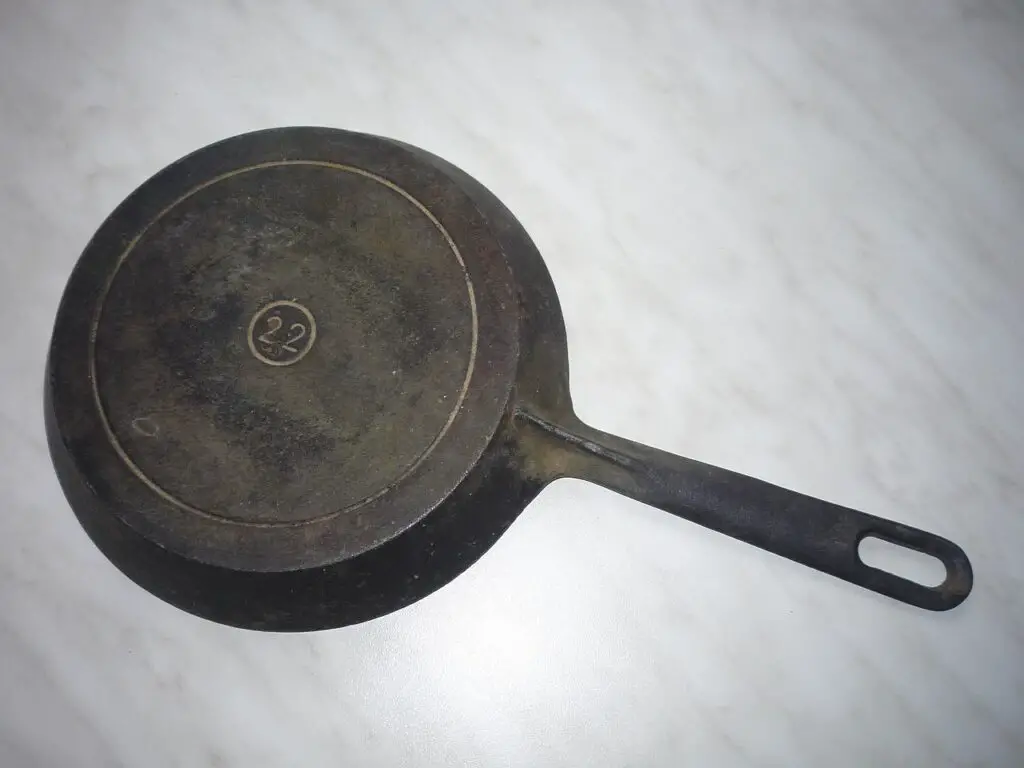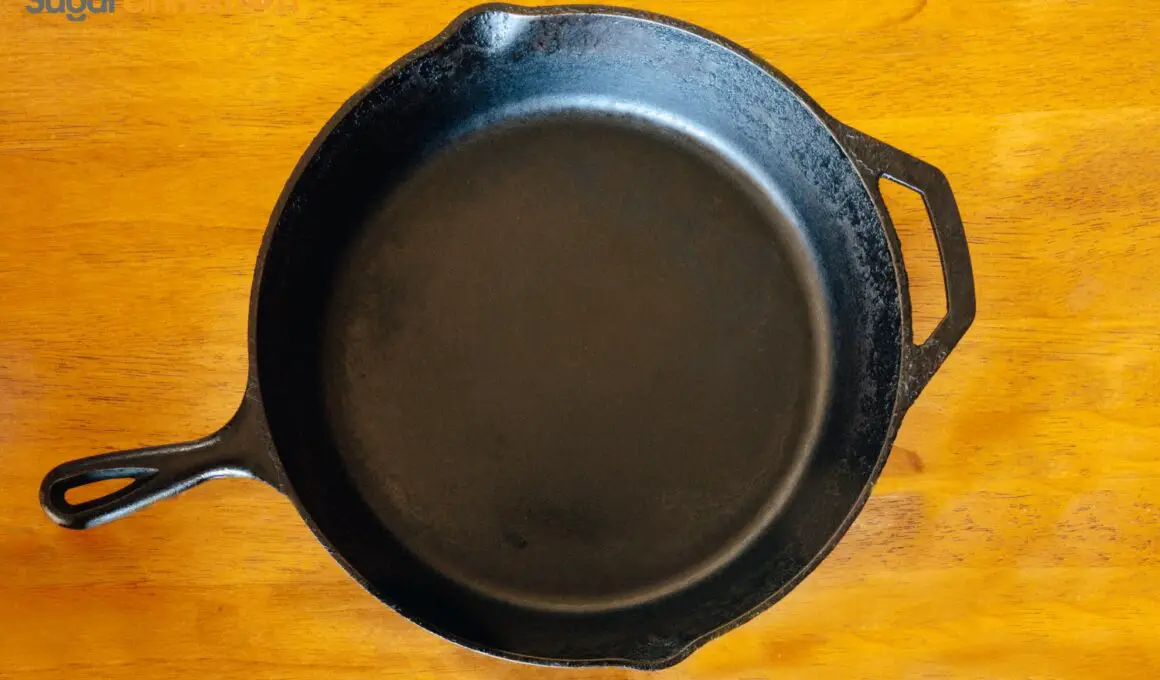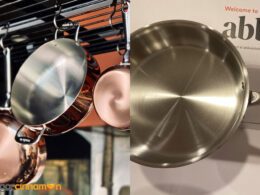Table of Contents Show
Did you know that cast irons can last centuries? Occasionally, on cast iron, you will see some marks positioned slightly off-center or askew, this is considered to appear this way based on the haste with which they were applied, this is known as gate marks. Gate marks on cast irons are not scars, stick around to learn what they are.
Cast irons were produced by the Chinese as early as the 6th century but it was sporadically produced in Europe by the 14th Century. Cast Iron has become a popular household cookware material in recent years and one of the reasons for this is that it can survive for decades or even centuries.
When you take care of cast irons, they get better with time meaning the older they get, the better you can rely on their performance. However, this applies to a high-quality iron skilled cast iron, and not some blackened tin pot or a pan that would rust beyond recovery when it’s neglected.
Many people only identify an original cast iron when it has a brand name on it. Cast Iron hasn’t changed much over the years but it’s a bit difficult to identify one that is an antique which is why gate marks were guaranteed to indicate your cast iron is pre-1890. Let’s explore the history of antique cast iron and what the gate mark on cast iron means in this article.
History of Cast Iron Making
When you spot a cast iron skillet in a flea market, you never know how many years it could have been, it can be a hundred and remain in top shape. Cast Iron was frequently passed down from generations and it was traced back to as early as the 6th century BCE and was also produced sporadically in Europe by the 14th century.
Cast Iron was introduced into England in 1500 and the next generation begin around the mid-1700s it has a gate mark. The first cast iron was made in China and it was first used in the making of tools and weapons. It was not widely used for cookware until 200 Bc and it came with the invention of Wok.
Cast Iron cookware is sought after in every household these days due to how durable it can be. Another reason we do love a classic cast iron skillet is that it works well with many heat sources and can be used for both cooking and serving. In retrospect, the production of cast irons has come a long way and its story is an intricate part of the saga of metal casting.
Cookware products made with cast iron include pans, pots, carbon steel, Dutch oven, skillets, girdles, bakeware, and many more. When it comes to cast iron, each brand has a well-conceived signature design and one way vintage cast iron are being identified is through the use of gate marks.
Gate Marks On Cast Iron Explained
Gate Marks is regarded as a long thin line found at the bottom of cast iron and it’s found in the next generation of these pieces which started around the mid-1700s. A gate mark in cast iron is a visible line or round mark that is left over from an earlier casting process. The place where the gate mark is located is where the iron entered the mold, this technique lasted from the mid-1700s to the 1800s.
Cast iron cookware was refined using a thinking wall method between 1875 and 1940, so these techniques were used in refining the cast irons to produce extremely well-made ones that would last generations. Understand that gate marks are not scars that your cast iron got from when they were being refined.
The minor changes done in the casting process are also what show the approximate date of the piece made. Gate mark often does not indicate that the cast iron has been around for decades as each brand now has a well-conceived signature. Also, the technique was only used around 1700 and even then it was well-grounded and polished down but you can still find it most of the time.
So, contrary to popular opinion on using gate marks to identify vintage cast iron, it’s only a by-product of older casting iron methods and there are lots of unmarked casting irons that are worth restoring in today’s world, a way to identify a cast iron is to search the internet for it.
How Old is Cast Iron With Gate Marks
Cast iron with gate marks is centuries old, this is a raised slash that is found on the bottom of your cast iron and they are almost guaranteed to be pre-1890. However, the gate-marking technique lasted from the mid-1700s to the 1800s. The thing with cast iron that has gate marks is that there are no other marks on them such as the manufacturer name which is why they are often mistaken for low-quality pans.
The making of cast iron with gate marks was discontinued in 1890 hence why they are quite rare to find now. The earliest pieces with gate markings were produced between 1875 and 1900 but they were thinner than the ones later produced.
While you would know that cast iron with gate markings are old, it is hard to determine when and who manufactured them exactly. Simply know that cast iron with gate marks are extremely old, rare, and valuable.
How Can You Tell If Cast Iron Is Real

If you belong to the ground and want to identify the source of cast iron cookware or looking forward to figuring out how and when it was made so it can be restored, you might have to hit the books to uncover the mystery behind your pan.
The old cast iron books are the ones declared to have the resources that can give you the most success however here are places you can look to tell if an unmarked cast iron is real.
- Review the top cast iron brands and you can start your search from there. Your cast iron can be 100 years old so searching brands that have been around that long can help narrow down your options.
- If the pan has some slight markings on it, you can look this up on Google. You can also memorize the distinct features and ”Google It”.
- Some old-generation cast irons come with logos and no markings so you can take a photo of it and search online to get a clue.
- Cast iron hasn’t changed much over the years but one that can help you identify century-old cast iron is the bottom. Cast iron cookware in the past was used on stone hearth or log fires hence the cooking surface will give you a hint.
- Almost all cast iron pans and pots come with numbers at the bottom and it has no letters or numbers, it should have a gate marking which is a distinctive-raised slash. While a gate mark won’t tell you the brand, it does indicate that your cast iron is an antique.
Final Thoughts
While cast iron with gate markings is very old, they do happen to vary in quality.
But if you do come across a cast iron with gate markings in an antique cookware collection today, know that it might have been passed down from generation to generation, and many have become family heirlooms. Having a vintage cast iron skillet can be interesting.
Many people do not know how old a cast iron skillet can last especially if it carries these magic gate markings. Many of the pots used in the late 1700s have somewhat changed with the function and fashion. So, if you happen to find a cast iron with gate markings, that is a rare antique.













